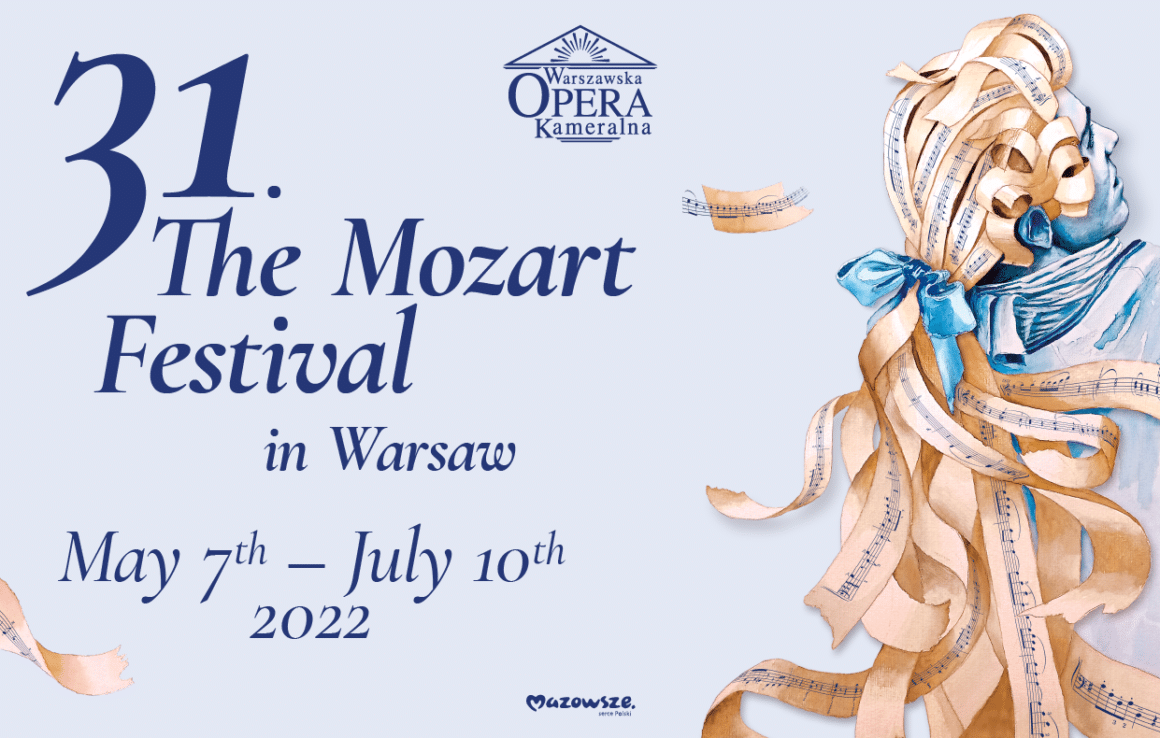31st Mozart Festival in Warsaw
Royal Castle in Warsaw
Concert
Is M for Mozart or for Mendelssohn
Wolfgang Amadeus Mozart (1756 – 1791)
Serenade No. 12 in C minor, KV 388/384a for wind instruments
Allegro
Andante
Menuet i Trio
Allegro
25′
Felix Mendelssohn Bartholdy (1809 – 1847)
Octet I E-flat major, Op. 20 for string instruments
Allegro moderato ma con fuoco
Andante
Scherzo: Allegro leggierissimo
Presto
Ancient Instruments Ensemble of Warsaw Chamber Opera
Musicae Antiquae Collegium Varsoviense
One day Robert Schumann was to describe Mendelssohn as “Mozart of the nineteenth century”. What these two composers had in common or what differed them? Both one and the other were the so-called brilliant children, whom their parents believed in their exceptionally gift, often investing quite a lot of money in their education. Has history judged which of them deserved to be called a greater genius? Or maybe you will judge for yourself while listening to two masterpieces of chamber music?
Nachtmusik
Wolfgang Amadeus Mozart composed his Serenade No. 12 in C minor for wind instruments (K 388 / 384a), also called Nachtmusik, in 1782 or 1783. However, in 1787 he re-instrumented it, dedicating it to a string quintet. Mozart was aware of the role of such music as serenades. It was music often composed for ceremonies and social gatherings, usually held outdoors. Usually it was performed on terraces or palace gardens, serving always as accompaniment. It does not change the fact that the composer treated his works very seriously. This Serenade is a proof of that. No detailed information has been preserved about this work. There are also no documents proving on whose request it was created. Originally dedicated to two oboes, two clarinets, a pair of horns and two bassoons, it intrigues us with the key changes in the first movement (Allegro) or the Minuet built in the form of a canon (interesting counterpoints) and a theme played on the basis of cancer (backwards – in canone al roverscio) in the Trio minuet. The finale of the Serenade (Allegro) is a sequence of variations in the main key of E flat major evolving into the final C major (one of the themes is later found in Don Giovanni). As Hermann Abert noted: Mozart forsakes here the typical features of a serenade in favour of music that sways between aggressive unisons and lyrical passages.
Felix Mendelssohn-Bartholdy – “The String Octet in E-flat major”, Op.20 (1825)
This work is one of Mendelssohn’s youthful compositions, written when he was only 16 years old. He created it on the occasion of the birthday of his friend, Edward Rietz, and with the overture to A Midsummer Night’s Dream, Octet is one of the works that first clearly reveal the composer’s genius. He also reveals maturity through the used means that makes this work a part of his legacy’s canon. The premiere of the Octet took place in 1836 at the Leipzig Gewandhaus, and the enthusiastic reception of critics who appreciated the value of the piece (especially youthful energy) means that today we consider the Octet a breakthrough item, and although it’s a typical chamber work, it’s not inferior to the seriousness of his symphonic works.
In all its parts the octet must be played in the style of a symphony; piano and forte should be precisely differentiated and much sharper emphasized than is usually the case in works of this genre – Mendelssohn himself pointed out.
No wonder, since the inspiration here was Walpurgis Night from Johann Wolfgang von Goethe’s Faust (The clamps of clouds and fog among trees; Thin out slowly; Blast in reeds, wind in leaves; Everything went away). Music takes us, to the world of ghosts, unreal things, and the composer’s biographer – Karl-Heinz Köhler – indicates here programmatic tendencies that inscribed him in Hegel’s aesthetic theory, who expected music to remain related to external content, without losing its own independence. No wonder the composition is considered to be one of the greatest achievements of the genre. It is a bridge between chamber music and the Master’s symphonic legacy.
Born in Hamburg, composer (1749-1832), conductor and pianist of Jewish origin, is one of the most outstanding creators of early Romanticism, whose achievements and talent revealed in his early childhood made him the successor of Mozart. Felix Mendelssohn Bartholdy, who studied piano and violin from an early age, was considered a child prodigy. He was friends with Goethe. He studied music theory and composition with his sister Fanny, and wrote his first piano pieces when he was 11. When he composed the Octet in E flat major, his repertoire already included nearly a hundred compositions! He did not limit himself to music, he studied literature, art and philosophy, and at the Humboldt University in Berlin he took part in lectures on Hegel’s aesthetics. As a result of anti-Semitic prejudices, he was rejected as the director of the Berlin Singakademie, but for several years he served as music director in Düsseldorf, running city festivals and music societies. After his father’s death, he moved to Leipzig, where he took the position of conductor of the Gewandhaus. The King of Saxony, Frederick August II, granted him the honorary title of the court bandleader. Several years before his death, Mendelssohn led to the foundation of a music conservatory in Leipzig, which he headed, teaching composition class. It is also worth remembering that he was the one, who contributed to the revival of interest in Johann Sebastian Bach’s music. He personally led St. Matthew Passion, and the legend says that he found work’s score at the market, where the saleswoman wrapped fish in sheet music. In a way, he was a denial of the creator of the Romantic era. He led a stable life, avoiding scandals, and all of it made him the star of his time. Unfortunately, its origin meant that in the 20th century he was temporarily forgotten, but after the World War II, his music experienced a renaissance in popularity. This one continues until today.


